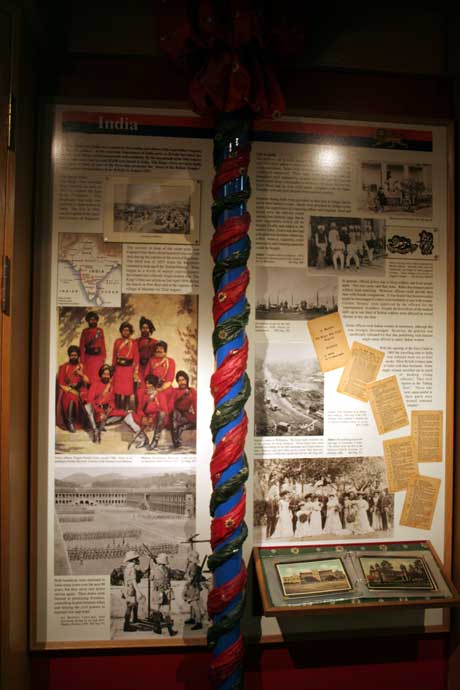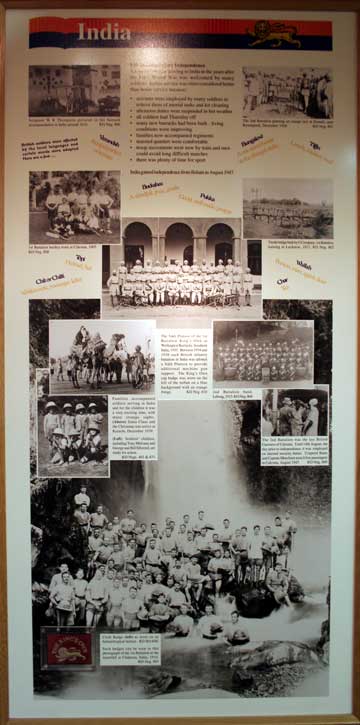 |
King's Own Royal Regiment Museum Lancaster |
|||||||||||||||||||||
|
HOME Museum & Collections Sales Donations Events Contact Us REGIMENTAL HISTORY 17th Century 18th Century 19th Century 20th Century First World War Second World War Actions & Movements Battle Honours FAMILY HISTORY Resources Further Reading PHOTO GALLERY ENQUIRIES FURTHER READING LINKS
© Images are copyright, Trustees of the King's Own Royal Regiment Museum. |
Museum Display Information India
Britain's involvement in India dated back to the 17th Century through
the trading operations of the East India Company. As the economic
importance to India grew, Britain increased both her political and
military involvement in the sub-continent. 19th Century Living in India From 1880 onwards the conditions in which the soldiers lived improved. The matti (mud built) and thatched bungalows were replaced by quite elegant brick built and tiled barrack blocks with deep, colonnaded verandahs to keep out the hot sun. Each block had its own wash room, with tin baths. Families now enjoyed purpose-built married quarters. Separate dining halls were provided so that men no longer had to eat in their barrack rooms. Meals were prepared by Indian cooks under the supervision of a messing officer and a sergeant. Beef and bread were the official staple ration, but chickens, eggs, bacon and vegetables were all bought locally and added to the soldiers diet. Every unit also had a ‘Regimental Institute’ where tea, coffee, tobacco, cigarettes, toilet necessities and cleaning materials could be purchased.
In the 19th Century life in India was not always easy for the soldier.
In general, the British policy had been to keep the two races separate.
However this was easier said than done. Native servants were often employed by the British and were often seen wearing the regimental cap badge on their puggaree (turban). These badges were known as puggaree badges. Local language
The British soldiers were also affected by the native tongue and certain
words were adopted by the British......here are a few.... 1920s and 1930s A four or five year posting to India in the years after the First World War was welcomed by many soldiers. Indian service was was often better than home service.
Both Battalions of The King’s Own served in India with three main duties:
© Images are copyright, Trustees of the King's Own Royal Regiment Museum. Only a proportion of our collections are on display at anyone time. Certain items are on loan for display in other institutions. An appointment is required to consult any of our collections which are held in store. |


